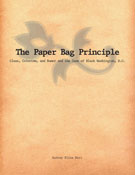Skin pigmentation, biogeographical ancestry and admixture mapping
Human Genetics
Volume 112, Issue 4 (April 2003)
pages 387-399
Mark D. Shriver, Professor of Anthropology
Pennsylvania State University
Esteban J. Parra
Department of Anthropology
University of Toronto at Mississauga
Sonia Dios
Department of Anthropology
Pennsylvania State University
Carolina Bonilla
Department of Anthropology
Pennsylvania State University
Heather Norton
Department of Anthropology
Pennsylvania State University
Celina Jovel
Department of Anthropology
Pennsylvania State University
Carrie Pfaff
Department of Anthropology
Pennsylvania State University
Cecily Jones
National Human Genome Center
Howard University, Washington, D.C.
Aisha Massac
National Human Genome Center
Howard University, Washington, D.C.
Neil Cameron
Takeway Media, London
Archie Baron
Takeway Media, London
Tabitha Jackson
Takeway Media, London
George Argyropoulos
Pennington Center for Biomedical Research, Baton Rouge, Louisiana
Li Jin
Department of Environmental Health
University of Cincinnati, Cincinnati, Ohio
Clive J. Hoggart
Department of Epidemiology and Population Health
London School of Hygiene and Tropical Medicine
Paul M. McKeigue
Department of Epidemiology and Population Health
London School of Hygiene and Tropical Medicine
Rick A. Kittles
National Human Genome Center
Howard University, Washington, D.C.
Ancestry informative markers (AIMs) are genetic loci showing alleles with large frequency differences between populations. AIMs can be used to estimate biogeographical ancestry at the level of the population, subgroup (e.g. cases and controls) and individual. Ancestry estimates at both the subgroup and individual level can be directly instructive regarding the genetics of the phenotypes that differ qualitatively or in frequency between populations. These estimates can provide a compelling foundation for the use of admixture mapping (AM) methods to identify the genes underlying these traits. We present details of a panel of 34 AIMs and demonstrate how such studies can proceed, by using skin pigmentation as a model phenotype. We have genotyped these markers in two population samples with primarily African ancestry, viz. African Americans from Washington D.C. and an African Caribbean sample from Britain, and in a sample of European Americans from Pennsylvania. In the two African population samples, we observed significant correlations between estimates of individual ancestry and skin pigmentation as measured by reflectometry (R2=0.21, P<0.0001 for the African-American sample and R2=0.16, P<0.0001 for the British African-Caribbean sample). These correlations confirm the validity of the ancestry estimates and also indicate the high level of population structure related to admixture, a level that characterizes these populations and that is detectable by using other tests to identify genetic structure. We have also applied two methods of admixture mapping to test for the effects of three candidate genes (TYR, OCA2, MC1R) on pigmentation. We show that TYR and OCA2 have measurable effects on skin pigmentation differences between the west African and west European parental populations. This work indicates that it is possible to estimate the individual ancestry of a person based on DNA analysis with a reasonable number of well-defined genetic markers. The implications and applications of ancestry estimates in biomedical research are discussed.
Read the entire article here.


